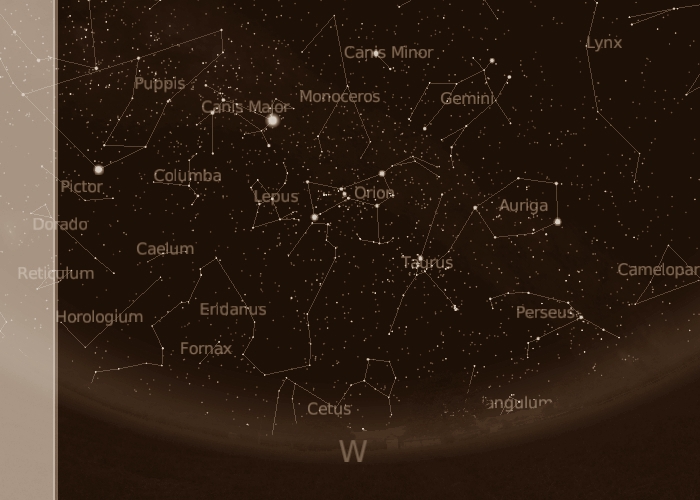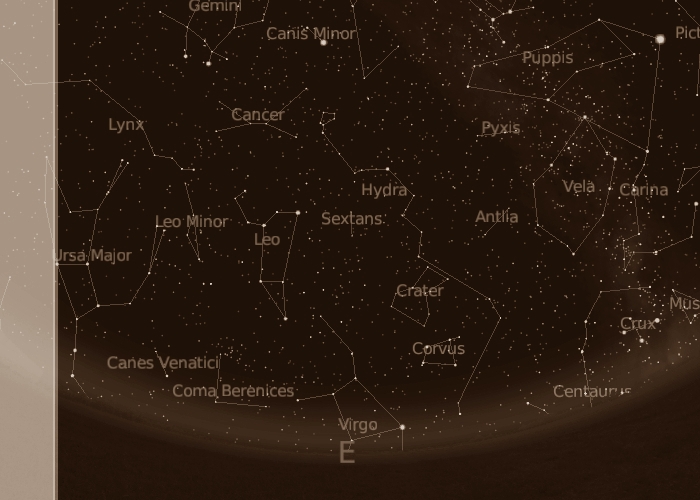Western Horizon
Eastern Horizon
![]()
Western Horizon
Eastern Horizon

We keep seeing the sky of the winter solstice. The show keeps being southeast. It's there -now slightly higher than last month- that are to be found those constellations which were born in the 18th century from the antique, vast constellation of Argo, the Ship, namely Puppis, the Ship's Stern, Vela, the Ship's Sails, and Carina, the Ship's Keel. Argo, the Ship, was the ship of the Argonauts, those Greek heroes who went in quest of the Golden Fleece. Those constellations are providing a fine show as the bright star, about due South, is Canopus. The Large Magellanic Cloud is still well visible, South. A row higher, Sirius, and Canis Major, the Great Dog, are to be found. Sirius is the sky's brightest star. About the zenith, the large quadrilateral of Orion, the Hunter, is easy to spot, with its three stars aligned in its center. M42, the Orion Nebula is seen below them. It's at the lower right star of Orion -Rigel that is- that Eridanus, the River Eridanus is taking its course, heading a long, meandering way down to Achernar. Cetus, the Whale is now tending to the horizon, as Aldebaran, the V-shaped Hyades, and the Pleiades keep being a fine show. Perseus, northwest is tending low too as, above, the bright Capella, of Auriga, the Charioteer is easy to find. to a printer-friendly chart
West for the mid-northern latitudes. West for the mid-southern latitudes

As the southeastern part of the sky belongs to the former parts of the ancient Argo, the Ship and that the eastern sky, by constrast, is looking somehow less dense, the long chain of Hydra, the Hydra is a fine view however. It's now almost completely risen, as it's bound to take its place South, when the sky of the vernal equinox will be in the skies! Fine show! Leo, the Lion, is now well risen, with its fine shape and its two bright stars, Regulus and Denebola. Keeping northeast Leo Minor, the Little Lion is interesting to see, as an interesting show is seen along. Ursa Major, the Great Bear is beginning to rise from the horizon, whence it will be seeable North during the following months. The Great Bear -its asterism the Great Dipper above all- is most famed in the northern hemisphere where the asterism is allowing to find the Polaris. Interesting. to a printer-friendly chart
East for the mid-northern latitudes. East for the mid-southern latitudes
(color maps with Stellarium; printer-friendly charts with Cartes du Ciel, Patrick Chevalley)
Website Manager: G. Guichard, site 'Amateur Astronomy,' http://stars5.6te.net. Page Editor: G. Guichard. last edited: 12/28/2010. contact us at ggwebsites@outlook.com